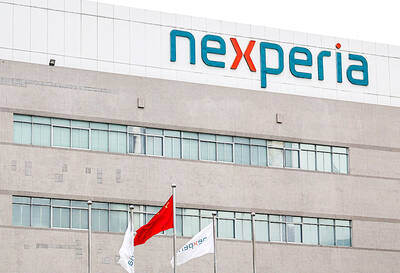After posting a net profit decline last year, gaming PC maker Micro-Star International Co (MSI, 微星科技) yesterday forecast growth for next quarter, as PC demand rises due to coronavirus-driven remote working and schooling.
Net profits last year fell to NT$5.59 billion (US$184.88 million), from NT$6.04 billion in 2018, which translated into earnings per share of NT$6.61, down from NT$7.15. Gross margin contracted to 13.16 percent from 13.6 percent.
MSI attributed the profit decline to inventory depletion of graphics processing units for cryptocurrency mining PCs, as well as heavy costs tied to relocating operations to Taiwan, amid a trade dispute between the US and China last year, president and CEO Chiang Sheng-chang (江勝昌) told investors.
Compared with the challenges the company faced last year, Chiang said he was more confident about the effects of the COVID-19 pandemic on the company.
“The pandemic is creating a lot of uncertainties ... but looking at current orders, I believe we still have strong market demand to rely on, which might even increase with the growing trend of telecommuting and distance learning,” he said, adding that much of its popular PC models have since sold out.
Citing the similarities between the situation in Europe and the US and the COVID-19 outbreak in China two months ago, Chiang said that overall market demand for PCs would recover once the virus is contained.
“The impact on PCs and other network and communication devices should be smaller compared with that on general consumer electronics,” he said.
The company is nevertheless seeking to cut operating expenses this year through freight cost management, while retaining a higher cash flow through smaller payouts to shareholders, MSI chairman Joseph Hsu (徐祥) said, suggesting a cash dividend of NT$4.2 per share.
MSI expects revenue in the first quarter to decline nearly 10 percent year-on-year to NT$27 billion, but would recover in the second quarter, boosted by upcoming launches of new central processing units and graphic cards from Intel Corp, Advanced Micro Devices Inc (AMD) and Nvidia Corp, Hsu said.
Those new chips would boost demand for MSI products and raise the average selling prices of PCs and motherboards, Hsu said.
Gross margin is also expected to improve next quarter, he added.
MSI is focusing heavily on its content creation product line that includes laptops, desktops and monitors, which is to make up about 20 percent of the company’s overall shipments, similar to last year.

JITTERS: Nexperia has a 20 percent market share for chips powering simpler features such as window controls, and changing supply chains could take years European carmakers are looking into ways to scratch components made with parts from China, spooked by deepening geopolitical spats playing out through chipmaker Nexperia BV and Beijing’s export controls on rare earths. To protect operations from trade ructions, several automakers are pushing major suppliers to find permanent alternatives to Chinese semiconductors, people familiar with the matter said. The industry is considering broader changes to its supply chain to adapt to shifting geopolitics, Europe’s main suppliers lobby CLEPA head Matthias Zink said. “We had some indications already — questions like: ‘How can you supply me without this dependency on China?’” Zink, who also

Taiwan Semiconductor Manufacturing Co (TSMC, 台積電) received about NT$147 billion (US$4.71 billion) in subsidies from the US, Japanese, German and Chinese governments over the past two years for its global expansion. Financial data compiled by the world’s largest contract chipmaker showed the company secured NT$4.77 billion in subsidies from the governments in the third quarter, bringing the total for the first three quarters of the year to about NT$71.9 billion. Along with the NT$75.16 billion in financial aid TSMC received last year, the chipmaker obtained NT$147 billion in subsidies in almost two years, the data showed. The subsidies received by its subsidiaries —

At least US$50 million for the freedom of an Emirati sheikh: That is the king’s ransom paid two weeks ago to militants linked to al-Qaeda who are pushing to topple the Malian government and impose Islamic law. Alongside a crippling fuel blockade, the Group for the Support of Islam and Muslims (JNIM) has made kidnapping wealthy foreigners for a ransom a pillar of its strategy of “economic jihad.” Its goal: Oust the junta, which has struggled to contain Mali’s decade-long insurgency since taking power following back-to-back coups in 2020 and 2021, by scaring away investors and paralyzing the west African country’s economy.

RE100 INITIATIVE: Exporters need sufficient supplies of renewable energy to meet their global commitments and remain competitive, the economics ministry said Local export-oriented manufacturers, including Taiwan Semiconductor Manufacturing Co (台積電), require sufficient supplies of green energy to maintain their competitiveness and regulations already ensure that renewable energy development adheres to environmental protection principles, the Ministry of Economic Affairs said yesterday, as the legislature imposed further restrictions on solar panel installations. The opposition-led Legislative Yuan yesterday passed third readings to proposed amendments to three acts — the Environmental Impact Assessment Act (環境影響評估法), the Act for the Development of Tourism (發展觀光條例) and the Geology Act (地質法) — which would largely prohibit the construction of solar panels in some areas. The amendments stipulate that ground-mounted solar